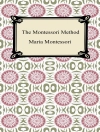Provide students a clear view of what success looks like for any process, task, or product.
What does success look like for your students? How will they know if they have learned? This essential component of teaching and learning can be difficult to articulate but is vital to achievement for both teachers and students.
The Success Criteria Playbook catapults teachers beyond learning intentions to define clearly what success looks like for every student—whether face-to-face or in a remote learning environment. Designed to be used collaboratively in grade-level, subject area teams—or even on your own—the step-by-step playbook expands teacher understanding of how success criteria can be utilized to maximize student learning and better engage learners in monitoring and evaluating their own progress. Each module is designed to support the creation and immediate implementation of high-quality, high impact success criteria and includes:
• Templates that allow for guided and independent study for teachers.
• Extensive STEM-focused examples from across the K-12 STEM curriculum to guide teacher learning and practice.
• Examples of success criteria applied across learning domains and grades, including high school content, skills, practices, dispositions, and understandings.
Ensure equity of access to learning and opportunity for all students by designing and employing high-quality, high-impact success criteria that connect learners to a shared understanding of what success looks like for any given learning intention.
表中的内容
Introduction
Module 1: What are success criteria?
Module 2: What are the challenges to creating and implementing success criteria? How do we overcome those challenges?
Module 3: How do success criteria pave the way for equity?
Module 4: Creating and implementing effective ‘I Can’/’We Can’ statements
Module 5: Creating and implementing single-point rubrics
Module 6: Creating and implementing rubrics
Module 7: Creating and implementing success criteria through teacher modeling
Module 8: Creating and implementing success criteria through exemplars
Module 9: Co-constructing criteria for success
Module 10: Different types of success criteria for different aspects of learning
Module 11: How do we use success criteria to foster meta-cognition
Module 12: How do success criteria support deliberate practice and transfer of learning?
Module 13: What is the relationship between success criteria and feedback?
Module 14: How do we use success criteria to fulfill the promise of equity?
References
关于作者
Nancy Frey is professor of educational leadership at San Diego State University and a leader at Health Sciences High and Middle College. Previously, Nancy was a teacher, academic coach, and central office resource coordinator in Florida. She is a credentialed special educator, reading specialist, and administrator in California. She is a member of the International Literacy Association’s Literacy Research Panel. She has published widely on literacy, quality instruction, and assessment, as well as books such as The Artificial Intelligences Playbook, How Scaffolding Works, How Teams Work, and The Vocabulary Playbook.












